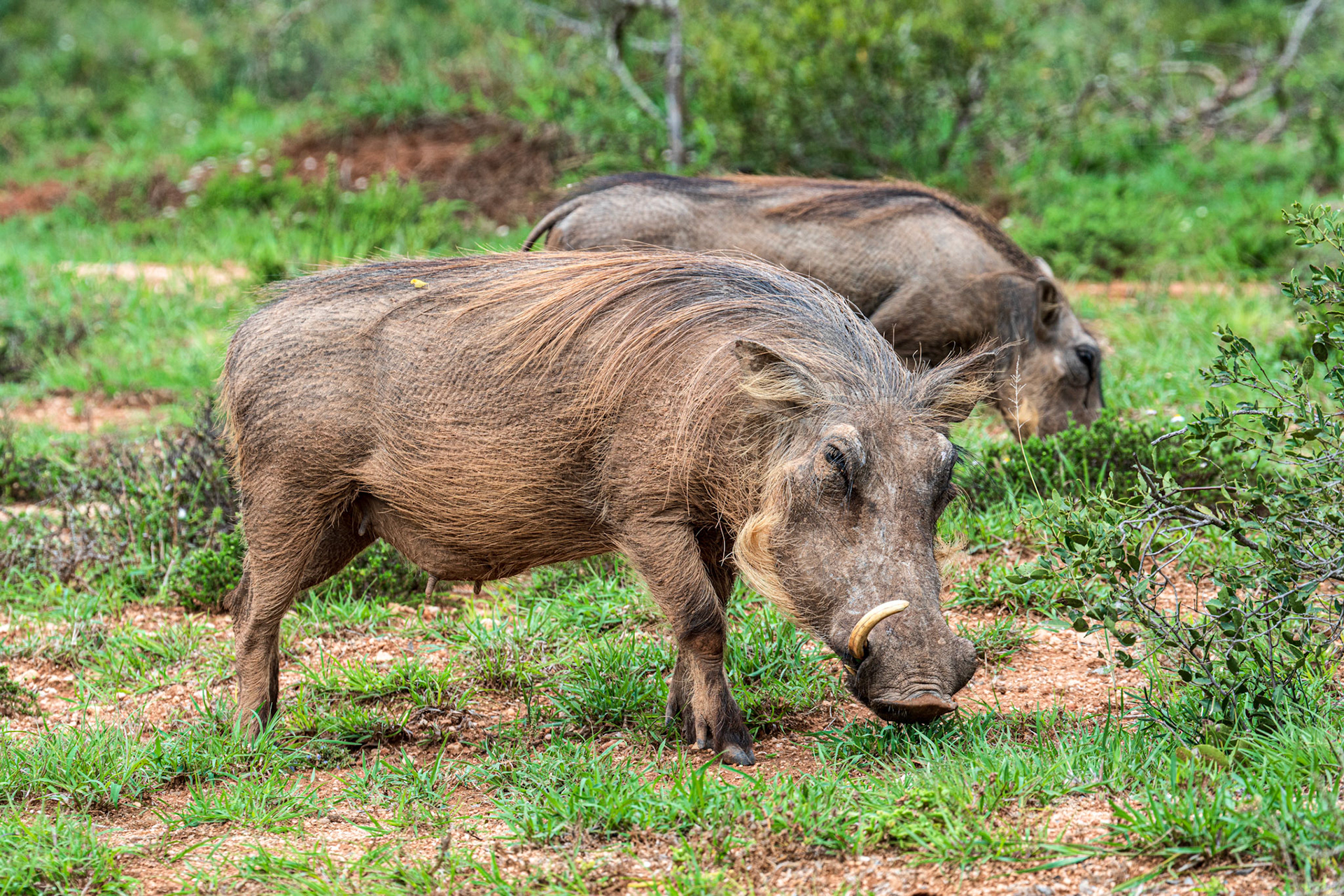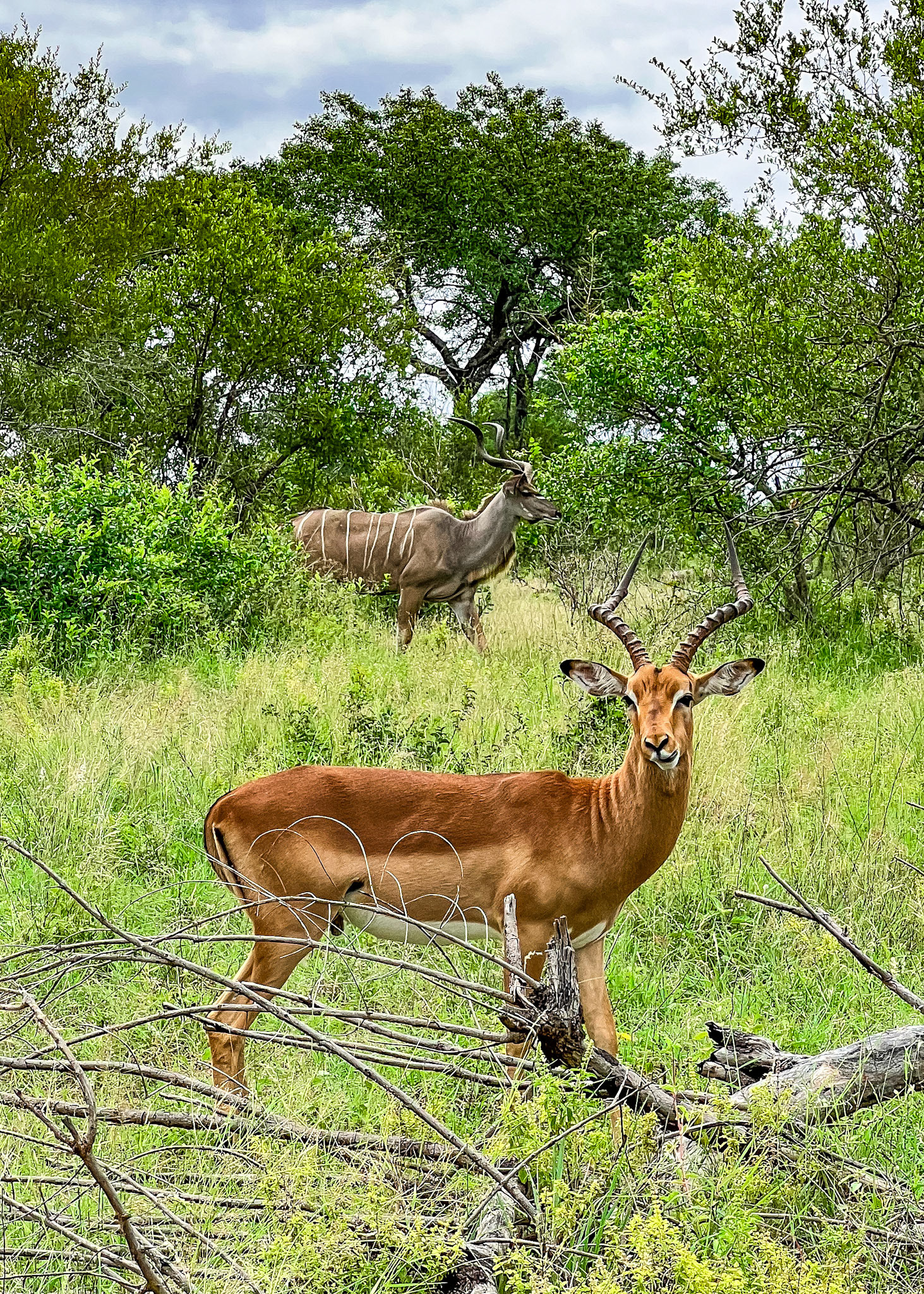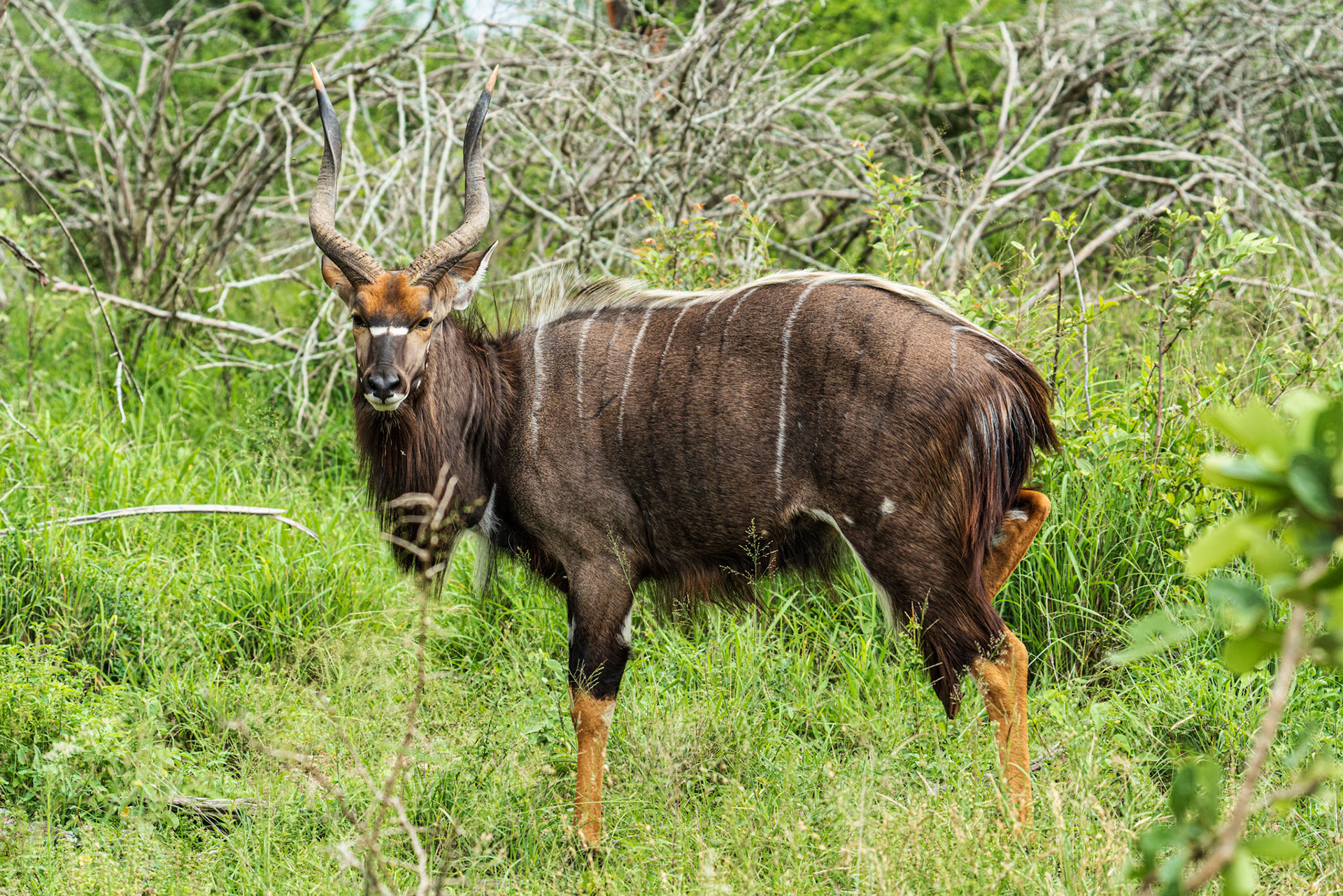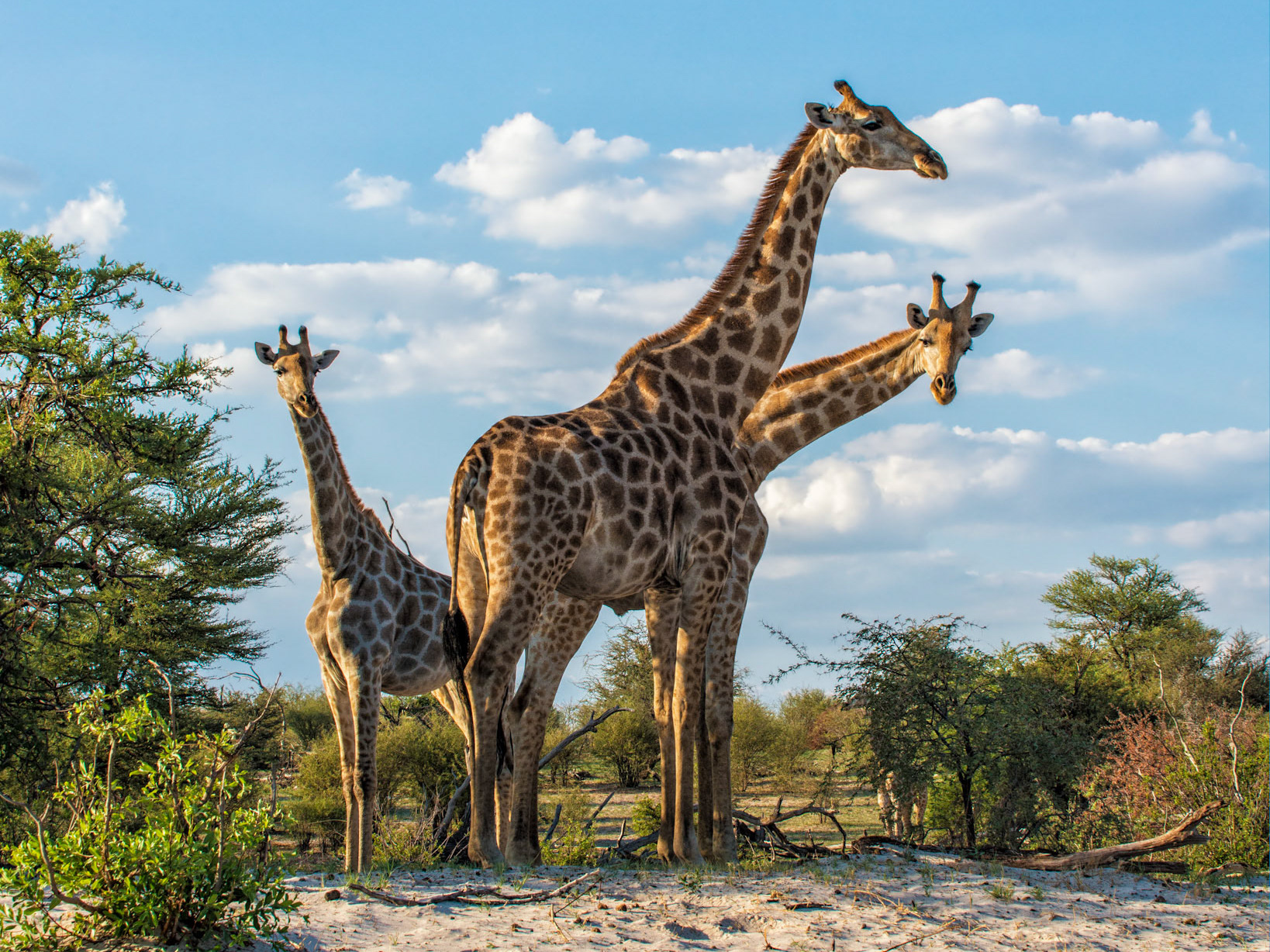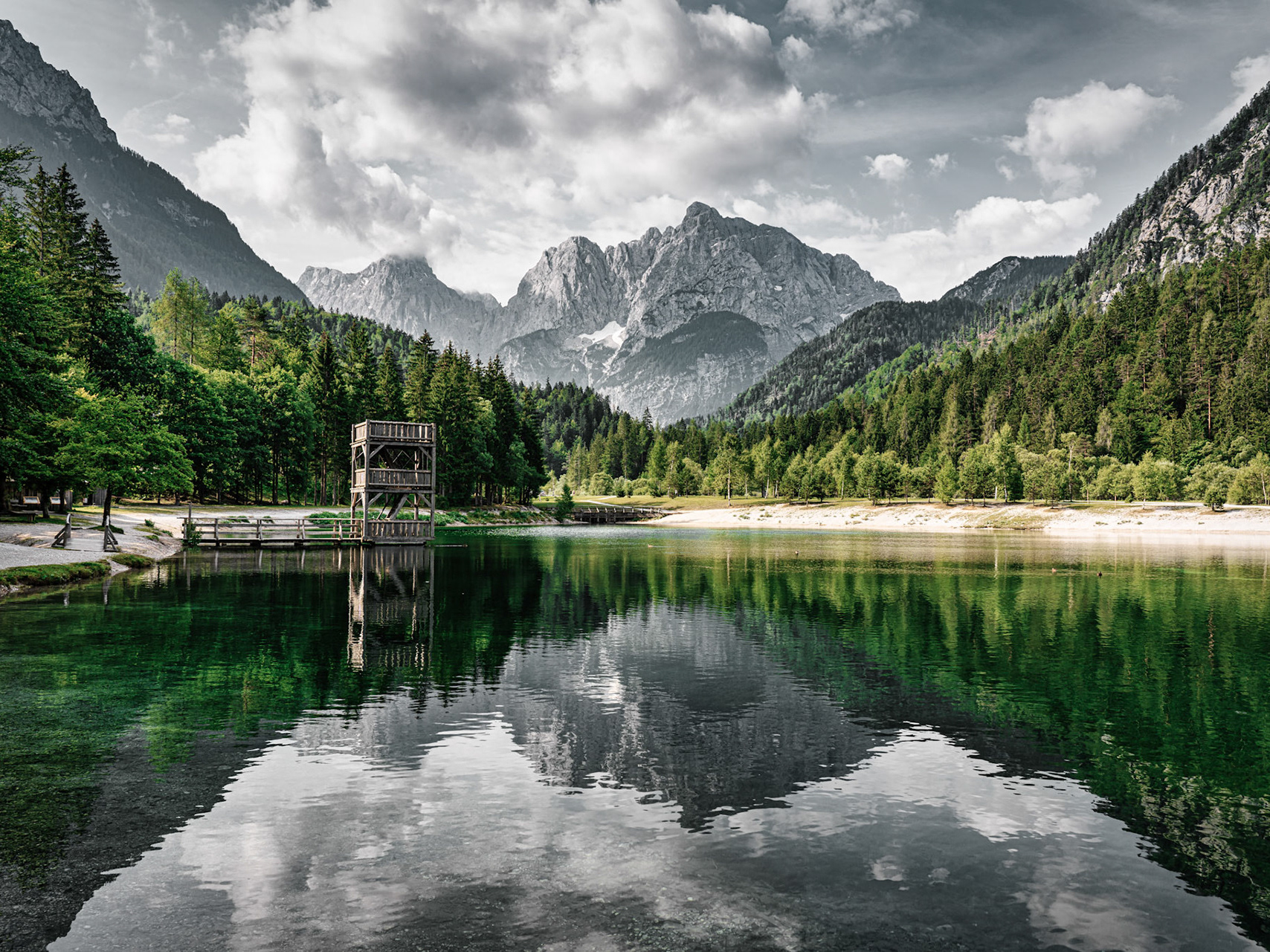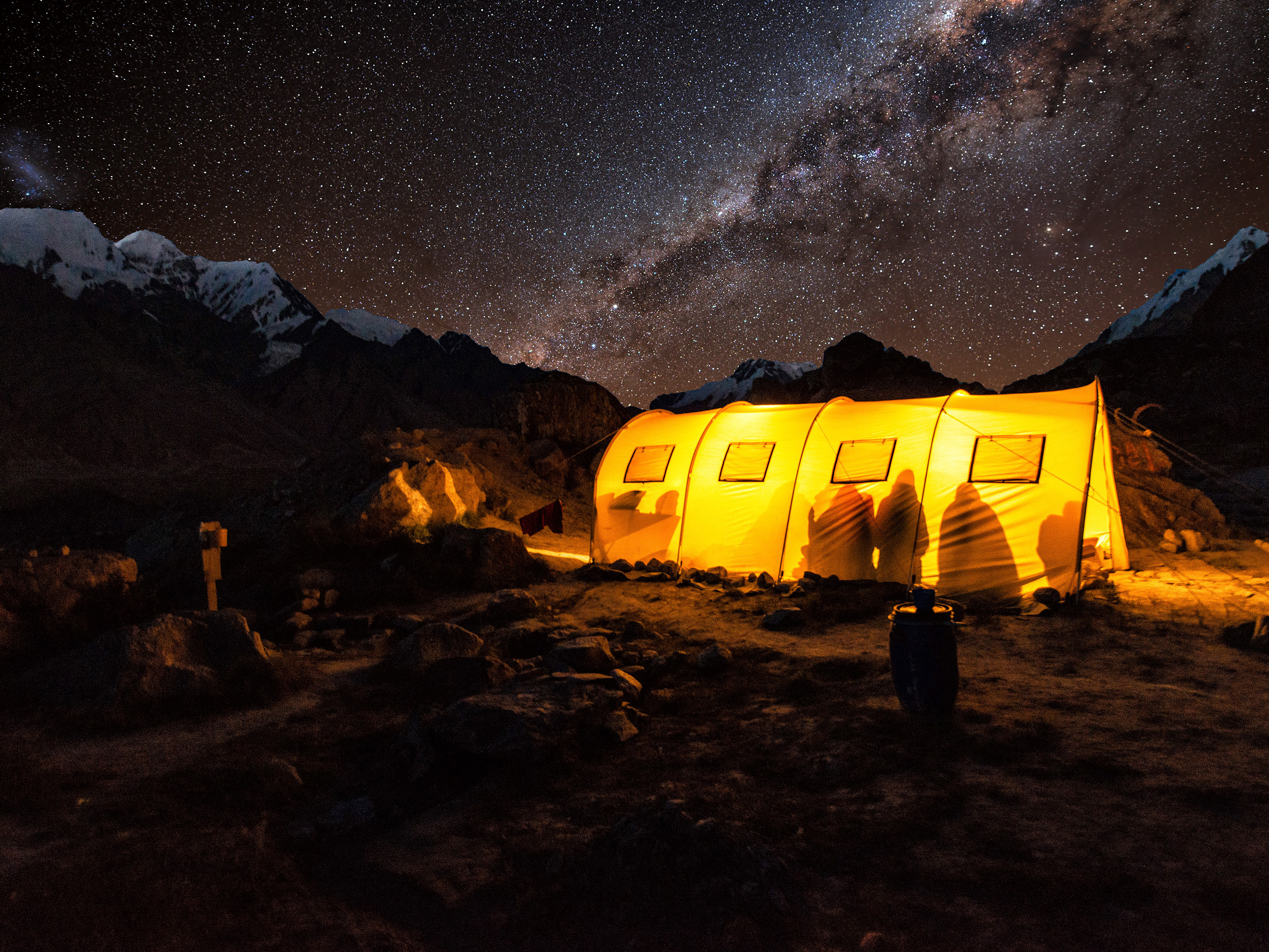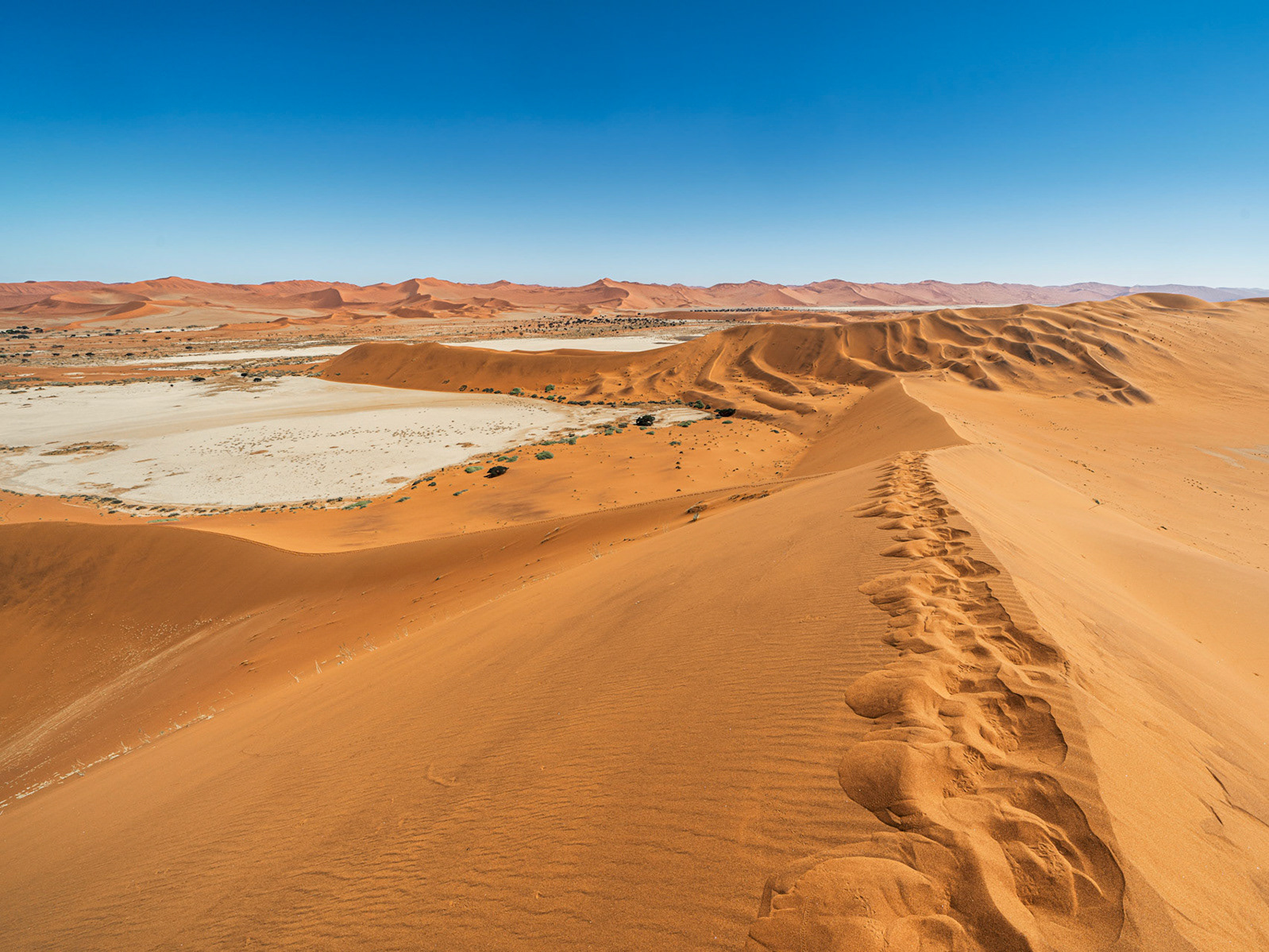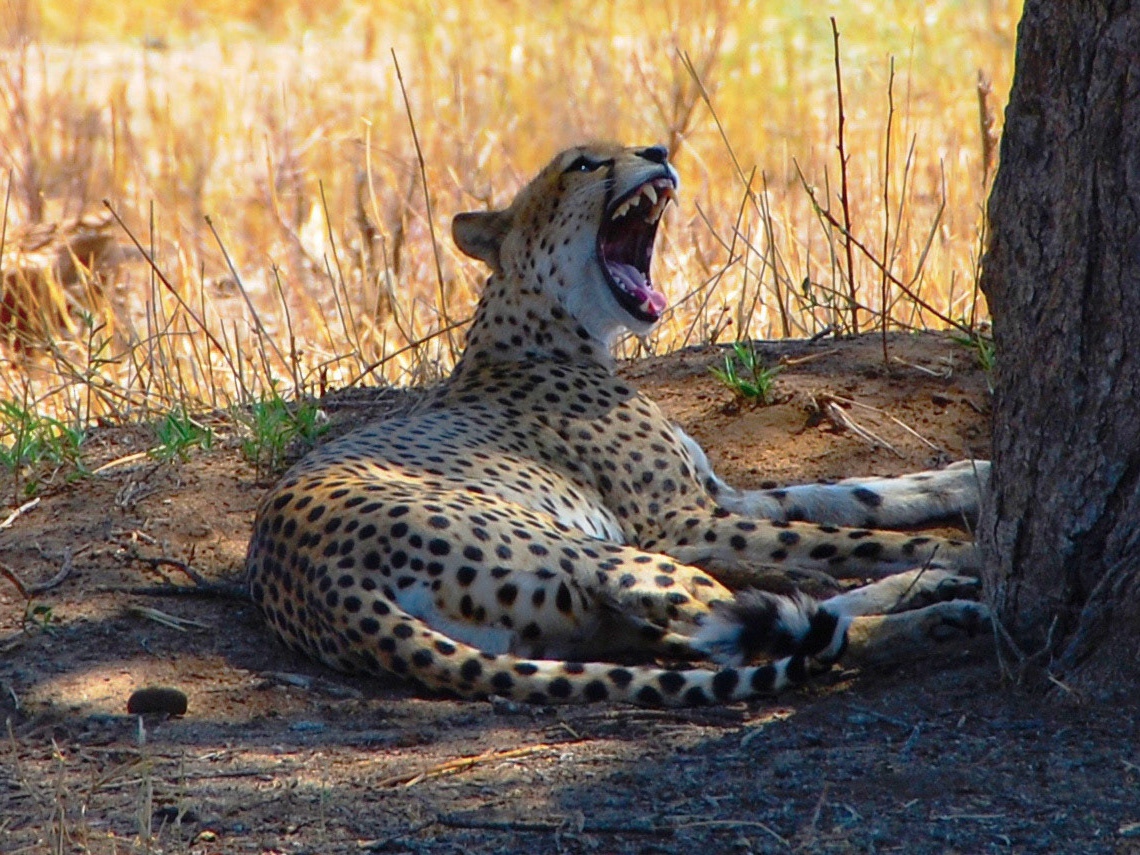Spot the Big 5
As the early morning sun rises over the bushveld, a herd of elephants thunders past, a leopard enjoys a snack up in a tree, and a lion stalks its prey. These are the joys of going on safari in South Africa & Eswatini (Swaziland), where you have an excellent chance of spotting the Big 5 (lion, leopard, rhino, buffalo and elephant) in national parks and wildlife preserves across the country.
African Lion
Courageous king of the jungle
An African lion is the largest predator on land. Preys of the lion include zebra, impala, giraffes, and other herbivores like wildebeest. A group of lions is called a pride and males are easily distinguished from females because of their large manes. The darker the lion's manes, the older he is.
A male lion is sometimes referred to as the king, but in reality, lions don't have a permanent social hierarchy. The dominant male in a lion pride can change at any time. The females hold the territory and stay with the pride in which they were born. They also do most of the hunting and take care of the cubs. Lions use their roar as a form of communication and can be heard up to 8 kilometers away.

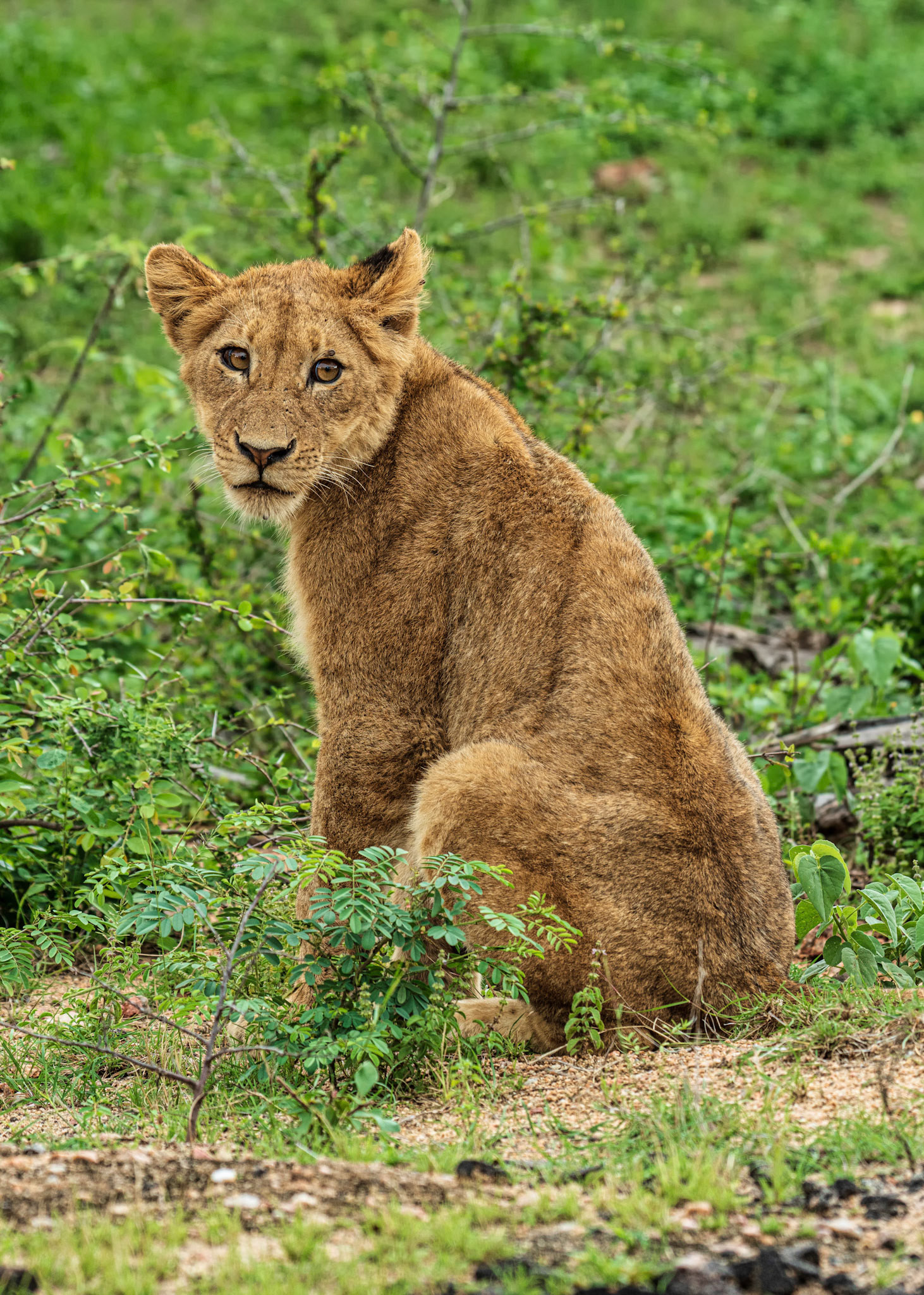
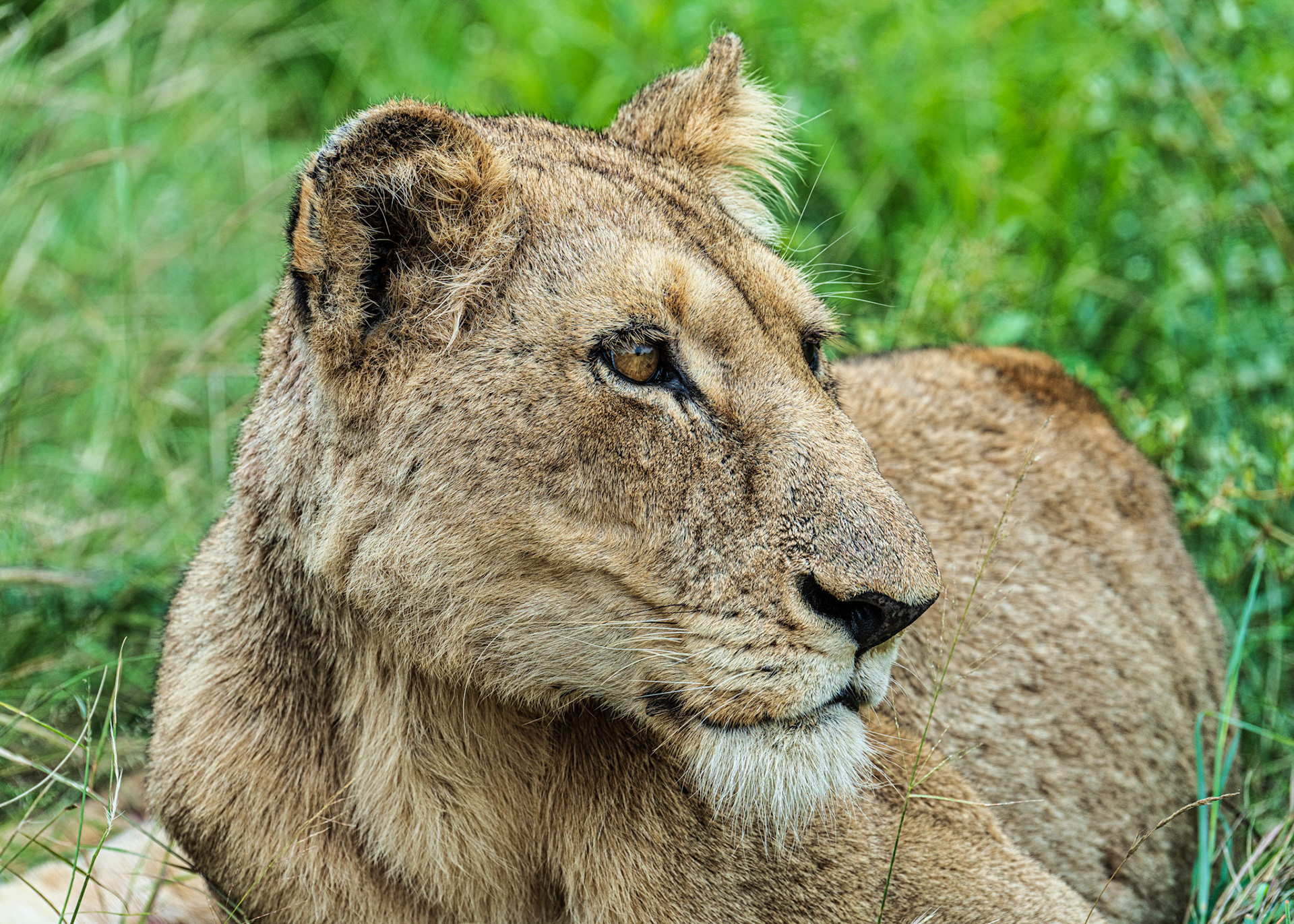
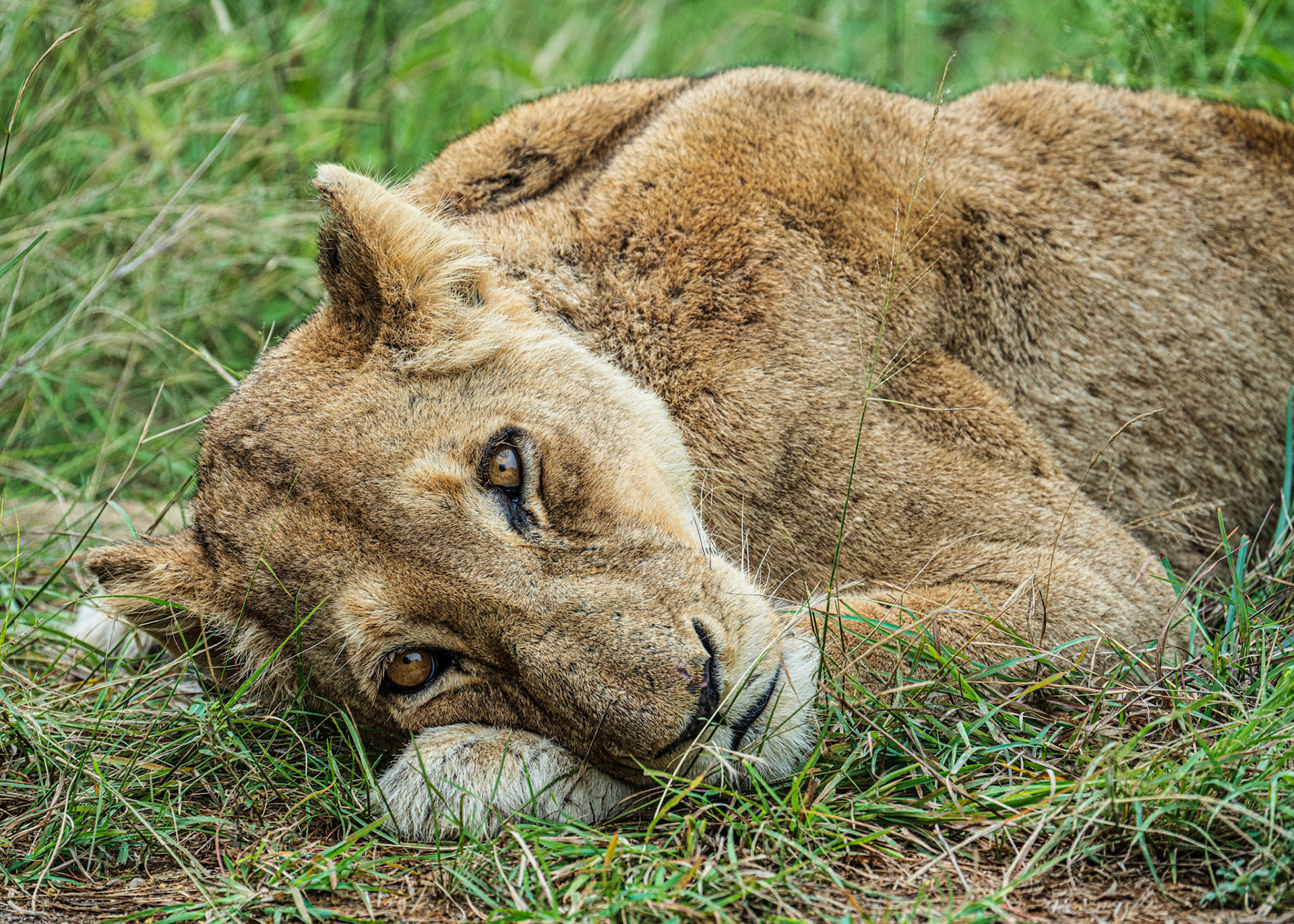
Leopard
Sneaky and excellent tree climber
The African leopard is the most solitary and elusive animal of the big 5, staying hidden during the day. They are the least seen of the Big 5 and on most occasions found alone. The leopard is nocturnal and mainly hunts at night. Their kills include zebra and antelopes. The elusive leopards hide their prey in a tree to prevent lions and hyenas from stealing it.
A lion and leopard both belong to the African big cats, but they can't get along. A lion will kill a leopard if it has the chance. A leopard is also a good swimmer and occasionally eats fish.

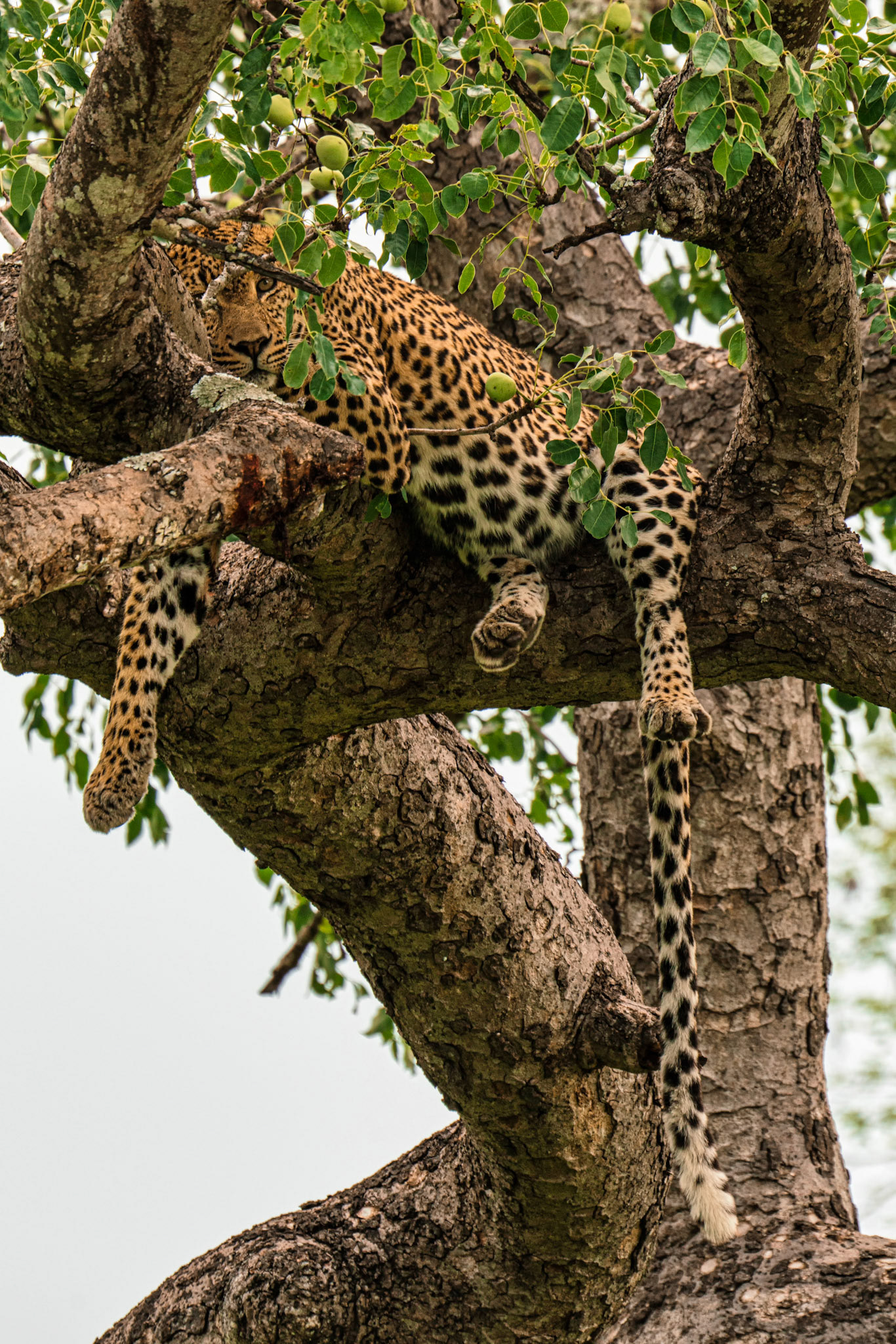
Rhino
Most endangered species of the Big 5
The Rhinoceros is the most endangered species of the Big Five due to rhino poaching and illegal trade in rhino horns. There are two species of rhino in Africa: the White Rhino and the Black Rhino.
The names of the rhino don't have anything to do with color as both species are grey. The name of the 'white' rhino is a corruption of the Dutch word 'wijd' (wide), which refers to the wide mouth or square lip of the white rhino. A rhino can weigh up to 3.5 tons and its horns can grow up to 1.5 meters long. Rhinos have poor eyesight but excellent hearing and sense of smell.


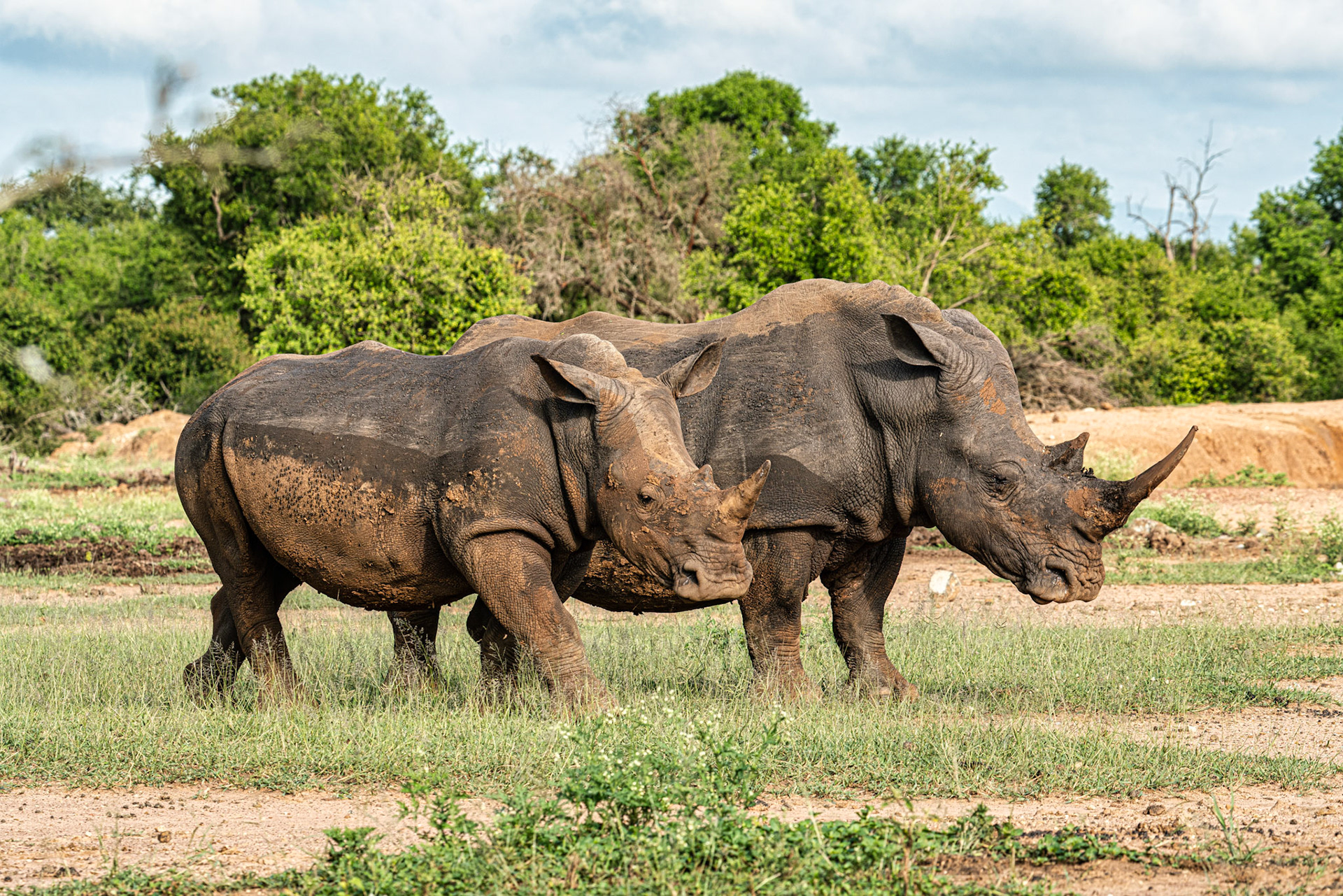
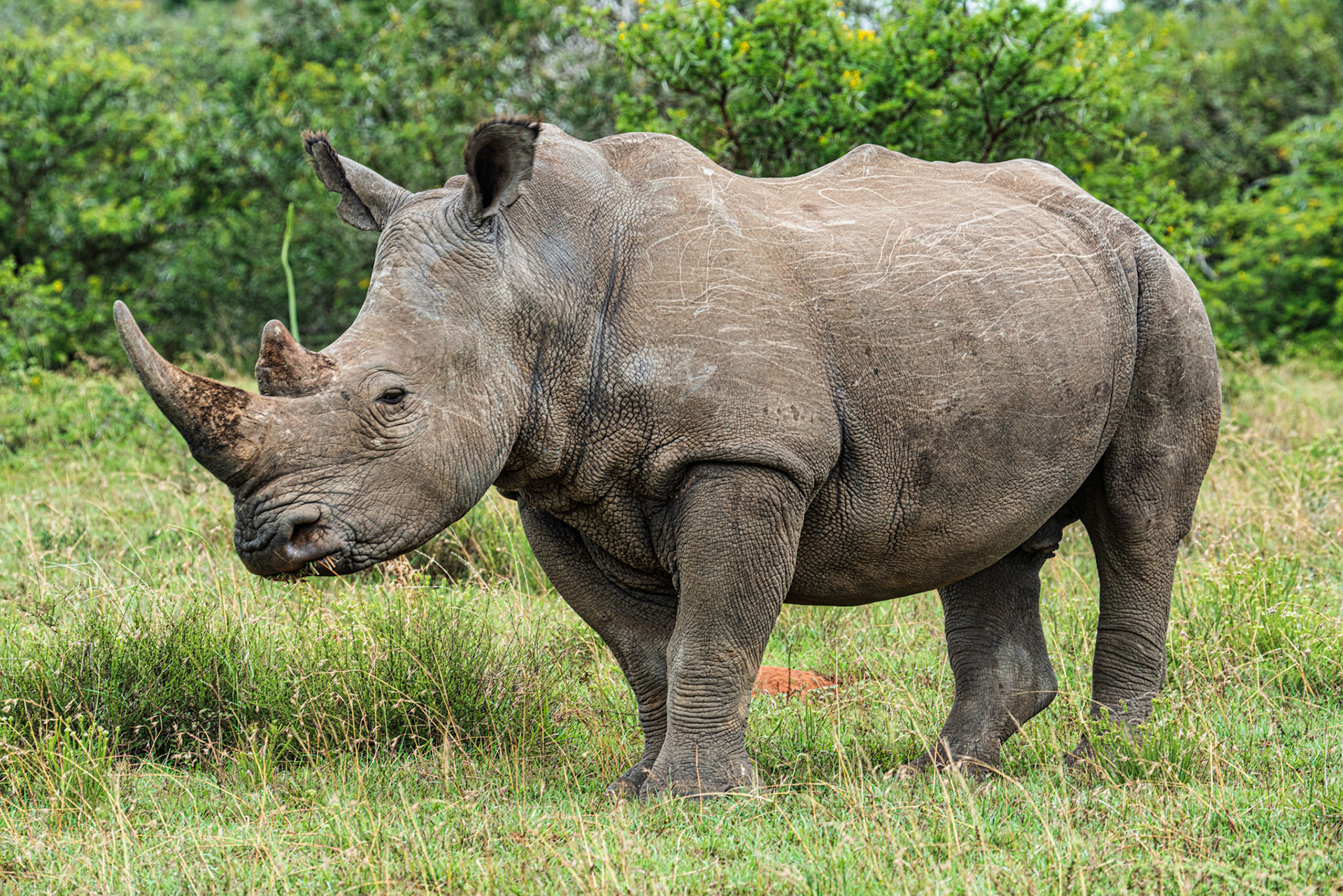
Cape Buffalo
Most dangerous to humans
The African buffalo is very territorial and protective and is probably the most dangerous animal of the big five to humans. If this cow-like animal feels threatened it can become very aggressive and charge with astonishing speed. Buffaloes are mostly found in groups and large herds and spend a lot of their time grazing. Both male and female buffaloes have horns, but the males' horns curve and come together in the center, forming a big bony plate called a boss.
The primary predator of the buffalo is the lion. A buffalo will try to protect and rescue another member of the herd and they have even been seen killing a lion after the lion had killed a member of the group.
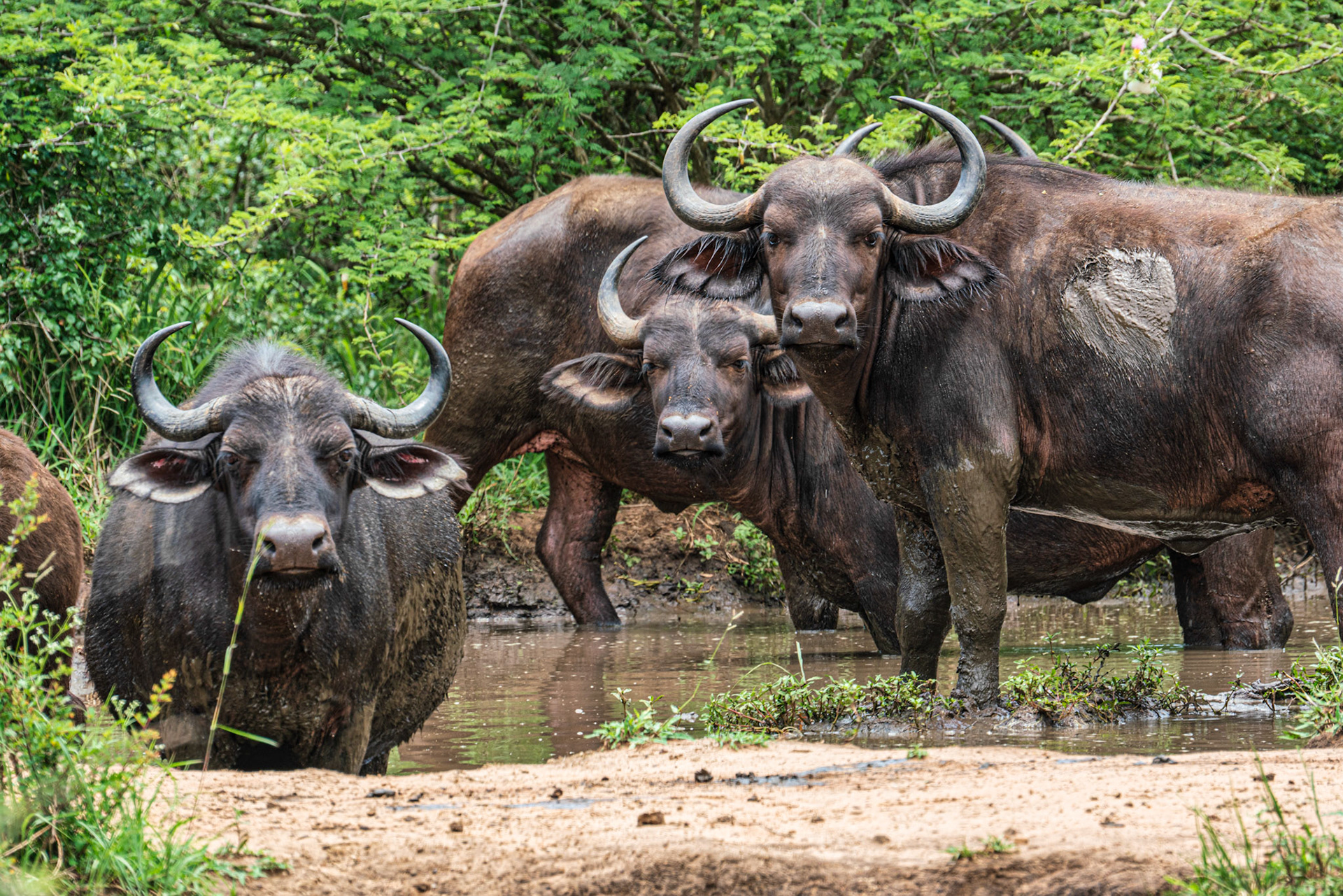

African Elephant
A gentle giant
The African savanna elephant is the largest land mammal in the world and can reach up to 3 meters in height and can weigh up to 7 tons. Elephants communicate across a large distance at a very low frequency through their feet and the soil that cannot be heard by humans. Elephants live in a herd that is led by the 'matriarch' female. The elephant is threatened by ivory poachers for their tusks.
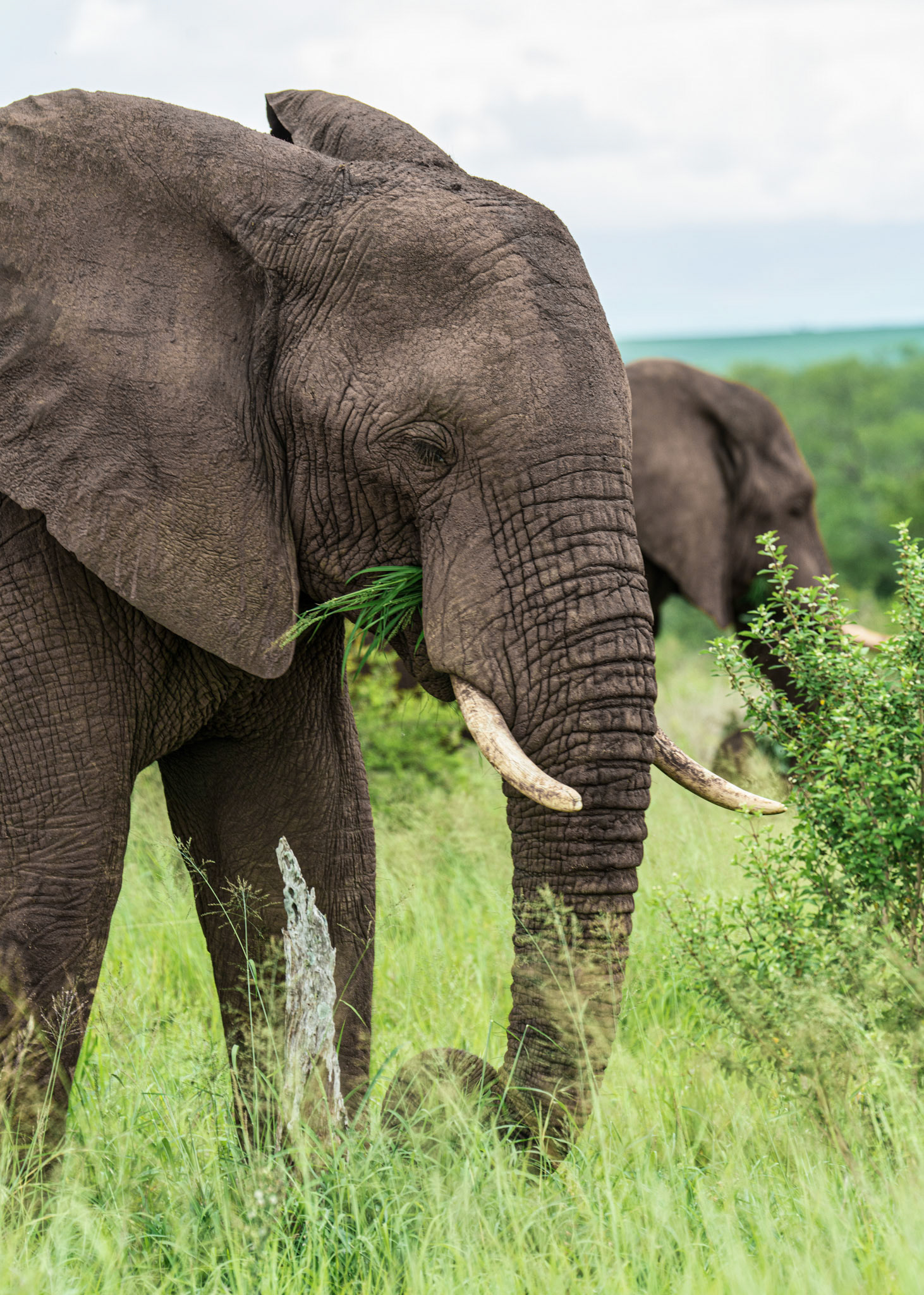
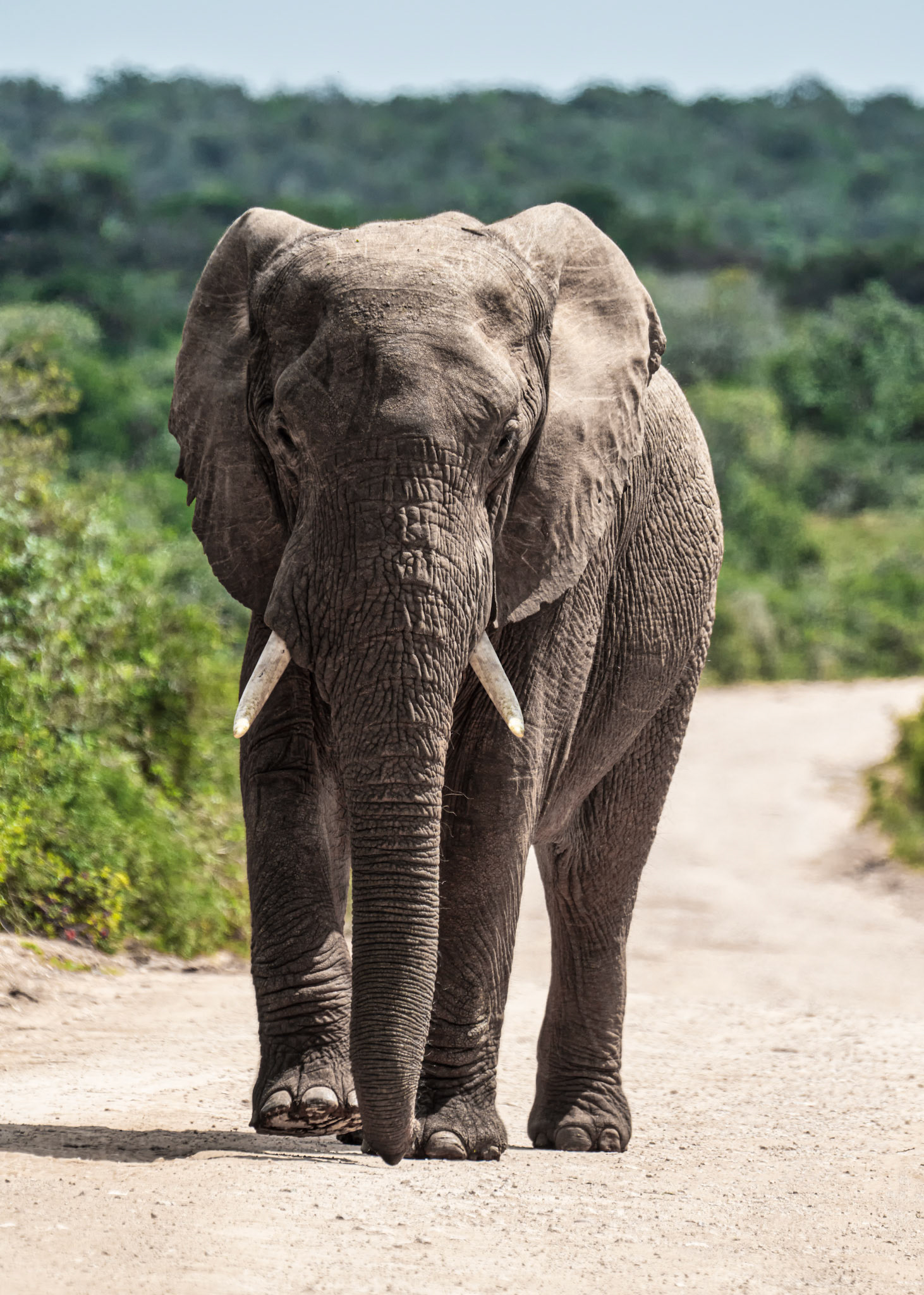
Other than the Big 5
Other than the Big 5, you can look forward to seeing cheetah, plenty of different antelope, zebra, hyenas , African wild dog, and many more.
Cheetah
Built for speed
Fastest mammal on land, the cheetah can reach speeds of 95 or perhaps even 115 kilometers an hour over short distances. It usually chases its prey at only about half that speed, however. After a chase, a cheetah needs half an hour to catch its breath before it can eat.
Once found throughout Asia and Africa, cheetahs today are racing toward extinction. Loss of habitat and declining numbers of their prey combine to threaten the future of these cats.
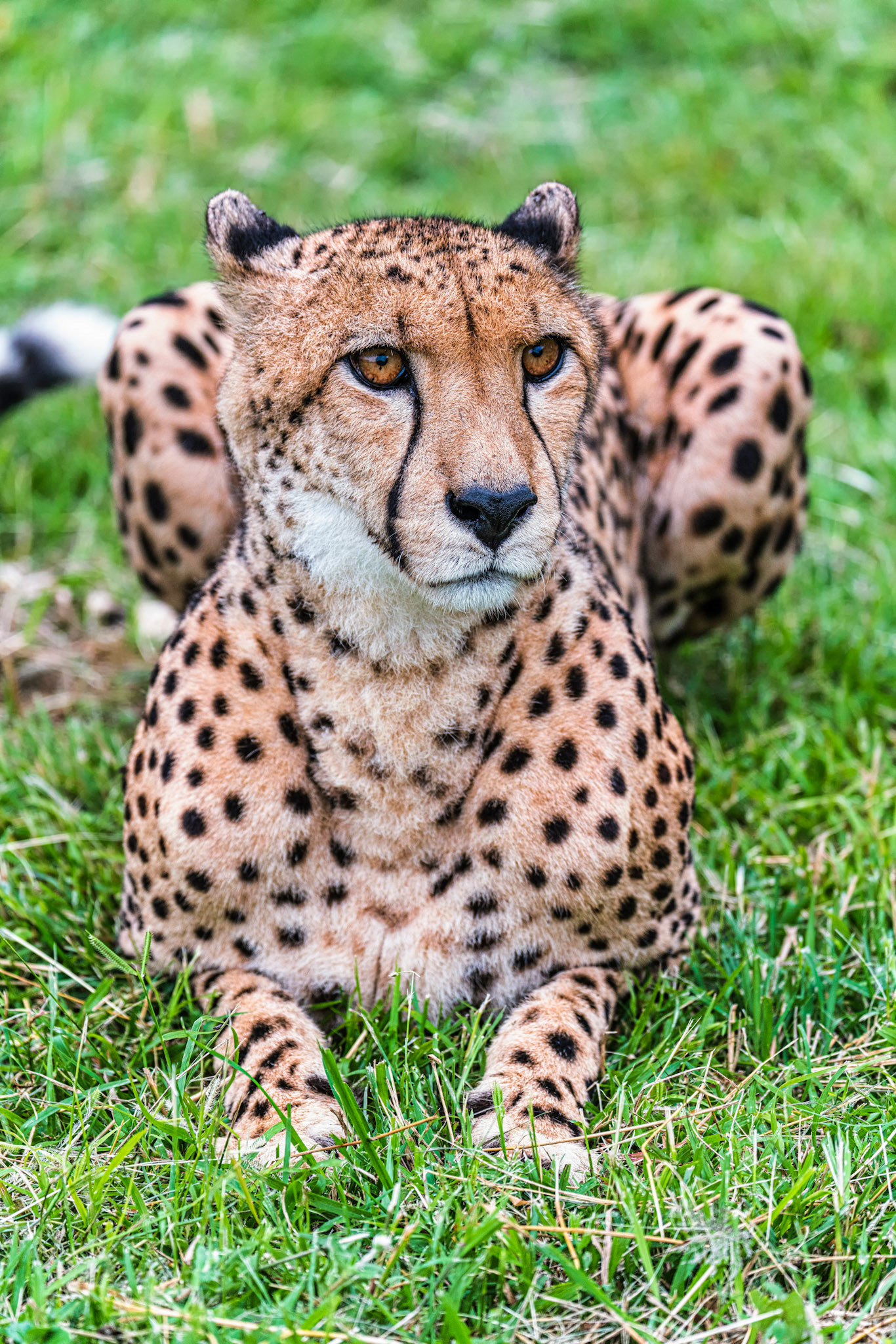

Giraffe
Marvels of the animal kingdom
Nothing is quite as striking, bold, graceful, and captivating as a giraffe. It is hard not to get lost in their intrinsic beauty.
At an average height of around 5 meters, the giraffe is the tallest land animal in the world. Giraffes are constantly on alert, and only sleep about 20 minutes a night as they stand vigil for danger. Other hoofed species often congregate around giraffes since they are the first to spot threats. And while their dramatic marking may seem counter intuitive in terms of camouflage, wild giraffes are often described as being nearly invisible in the brush of the African plains.

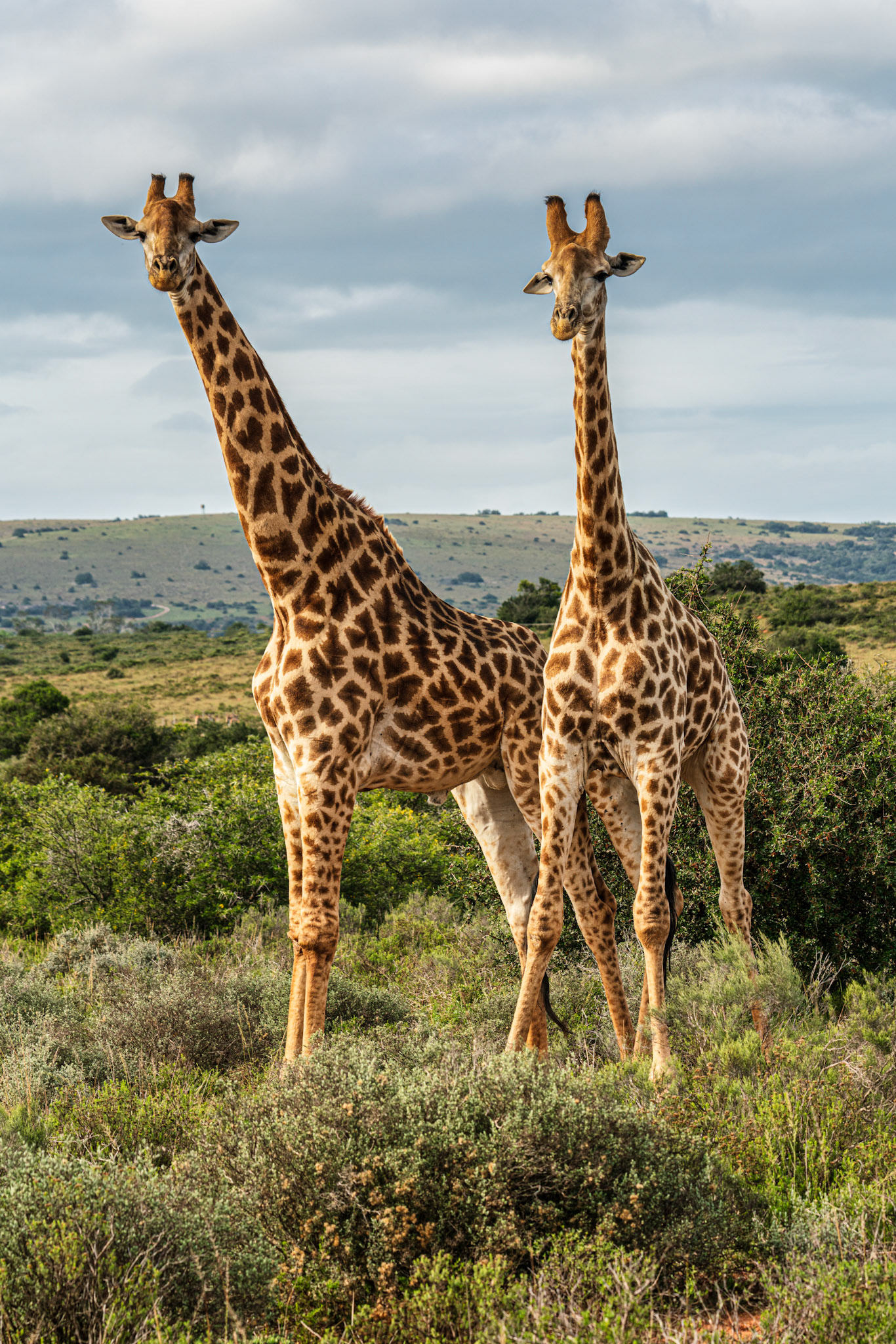
Zebra
Black and white beauties
Each zebra has its own unique pattern of distinctive stripes, just as humans have their own unique pattern of fingerprints.
Zebras are constantly on the move to find fresh grass and water. Sometimes they gather in huge herds of thousands as they migrate to better feeding grounds. Within a herd, zebras tend to stay together in smaller family groups. Families are generally made up of a male, several females, and their young.
As a zebra grazes, it uses its sharper front teeth to bite the grass, and then uses its duller back teeth to crush and grind. A zebra's teeth keep growing for its entire life, because constant grazing and chewing wears them down.

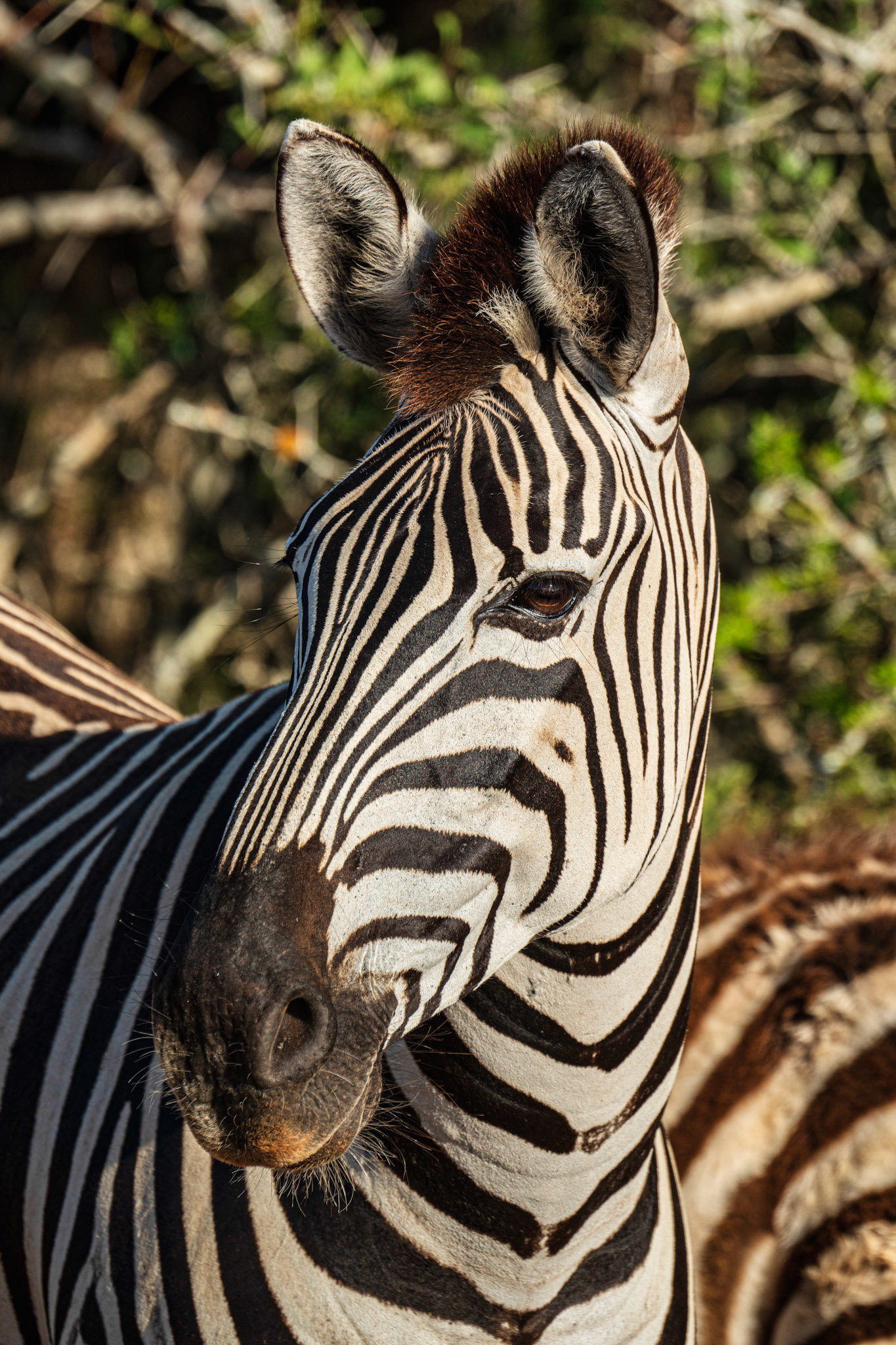
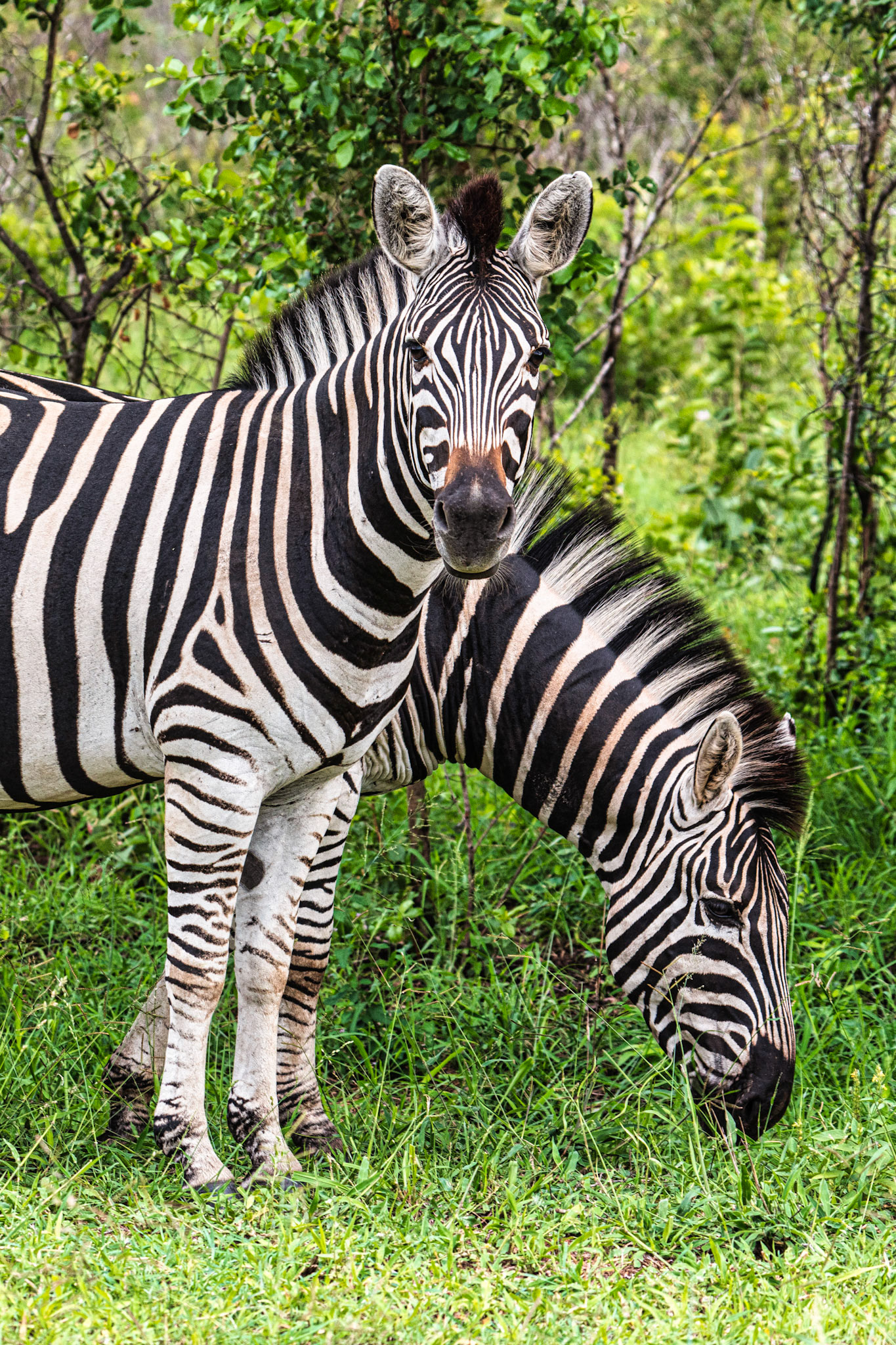

Hyena
Famed scavengers
Lions and hyenas often compete over the same food in overlapping territories. Sometimes the hyenas do the work of organizing, chasing down, and killing prey only to have lions steal it. Lions often injure or kill hyenas as they fight over a carcass. Both hyenas and lions mark and establish territories, and both species are always on guard. When confronted by a lion, the spotted hyena calls for help from other hyenas.
In a large group, spotted hyenas are able to chase lions away from a kill. But during a hunt, the hyena's impressive hunting skills come into play. They are able to chase down prey over long distances while running at up to 60 kilometers per hour.
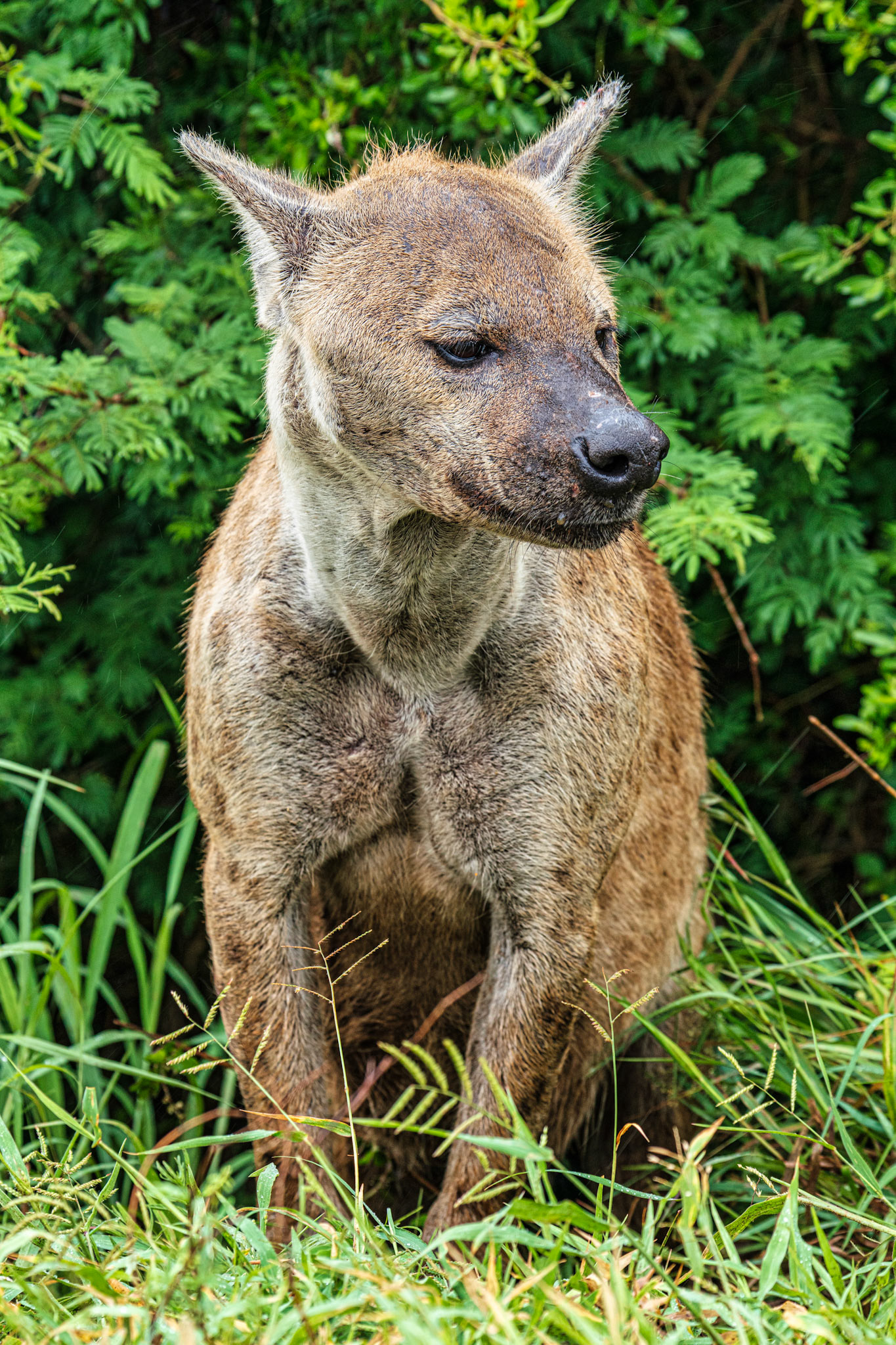
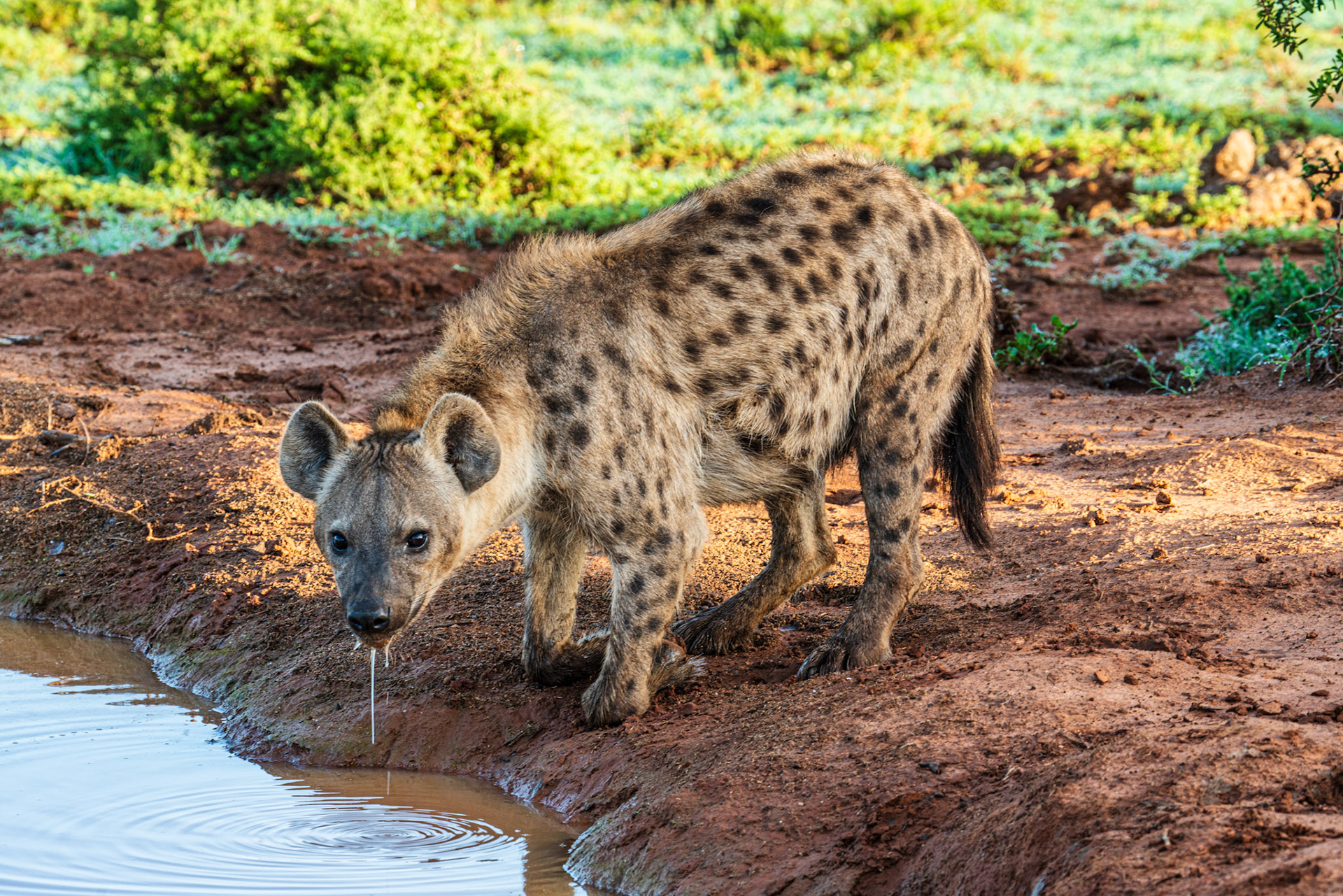
African Wild Dog
Painted pack hunters
African wild dogs are among the most effective predators in the world. They use extraordinary cooperation and teamwork to pursue, overhaul and bring down their prey. As a result 80% of their hunts end successfully, compared to, say, lions at 10%. This is nearly all a result of their pack coordination, which is still a rich source of zoological research. It was only recently discovered that they use sneezes to ‘vote’ on hunting decisions – just one of many fascinating African wild dogs facts.
Primates
The smaller primates of Africa such as Baboons and Monkeys are of the more common inhabitants. They are usually found in woodlands with rocky areas near water but seldom in open grassland. Their most feared predator is the Leopard.
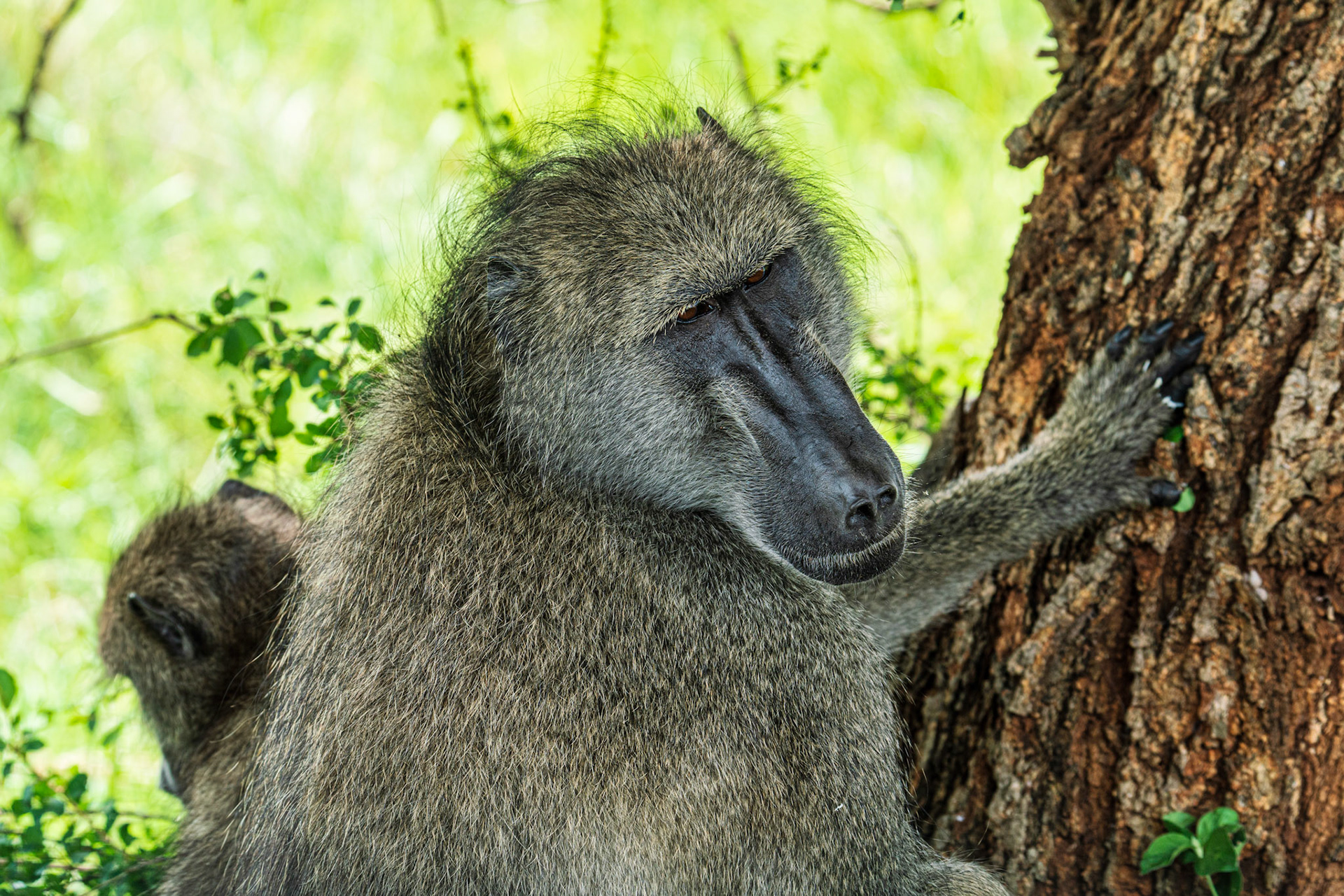
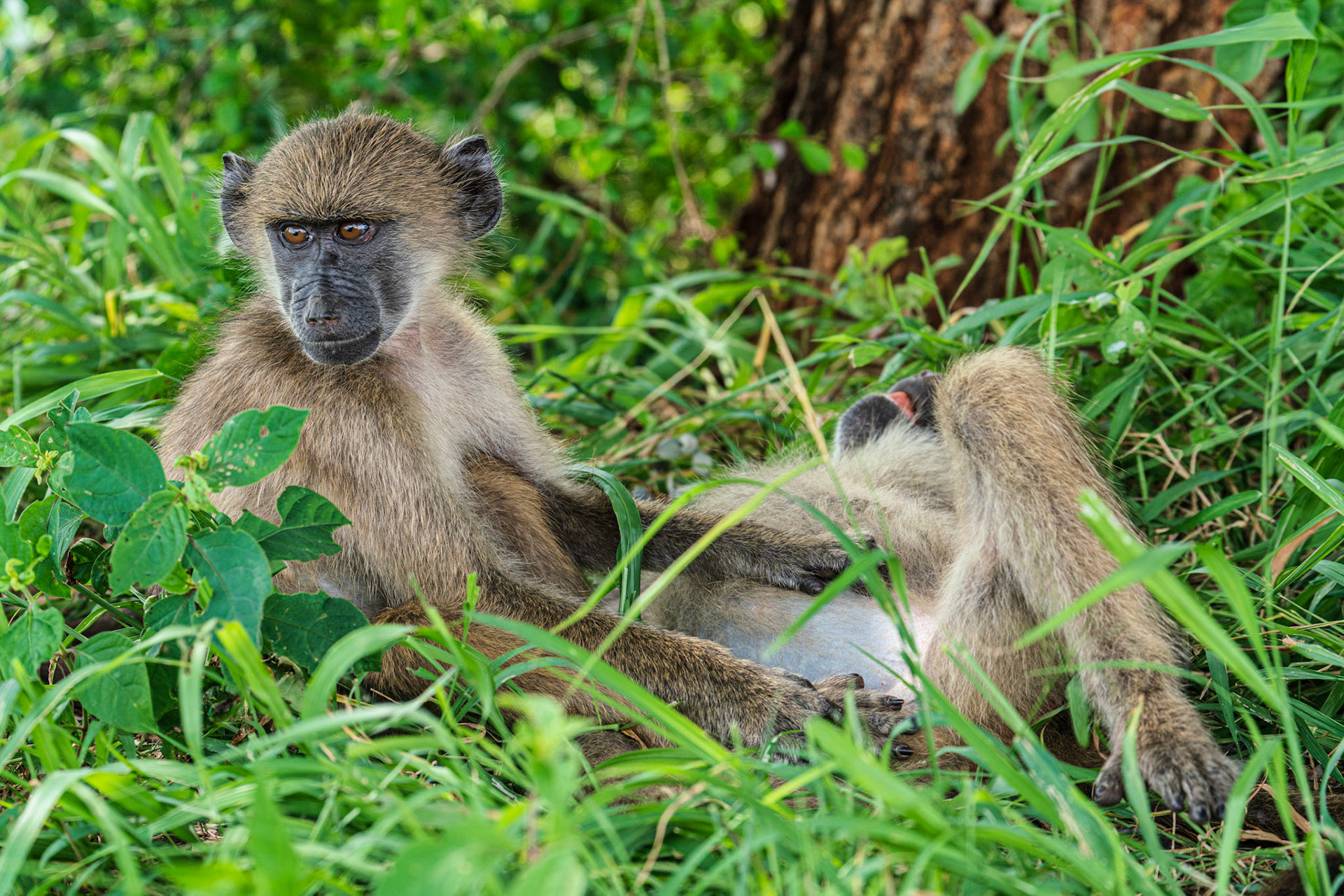
Grazers & Browsers
Most of Africa's herbivores can be classified as either grazers of grass or browsers of leaves off trees. The grassland has been described as the “engine room of the savanna”. It provides sustenance for large grazing herds, while the mixed woodland within the savanna provides the diet for the browsers.


